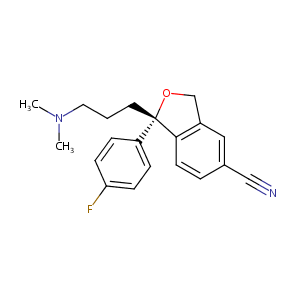| 1 |
ClinicalTrials.gov (NCT01123707) To Assess the Safety and Tolerability of an Oral Aripiprazole/Escitalopram Combination Therapy in Participants With Major Depressive Disorder (MDD)
|
| 2 |
Aripiprazole FDA Label
|
| 3 |
Drugs@FDA. U.S. Food and Drug Administration. U.S. Department of Health & Human Services. 2015
|
| 4 |
URL: http://www.guidetopharmacology.org Nucleic Acids Res. 2015 Oct 12. pii: gkv1037. The IUPHAR/BPS Guide to PHARMACOLOGY in 2016: towards curated quantitative interactions between 1300 protein targets and 6000 ligands. (Ligand id: 34).
|
| 5 |
Trusted, scientifically sound profiles of drug programs, clinical trials, safety reports, and company deals, written by scientists. Springer. 2015. Adis Insight (drug id 800034267)
|
| 6 |
Clinical pipeline report, company report or official report of the Pharmaceutical Research and Manufacturers of America (PhRMA)
|
| 7 |
Aripiprazole acts as a selective dopamine D2 receptor partial agonist. Expert Opin Investig Drugs. 2007 Jun;16(6):771-5.
|
| 8 |
Aripiprazole: a review of its use in schizophrenia and schizoaffective disorder. Drugs. 2004;64(15):1715-36.
|
| 9 |
Drug Interactions Flockhart Table
|
| 10 |
Small Molecule Antipsychotic Aripiprazole Potentiates Ozone-Induced Inflammation in Airway Epithelium. Chem Res Toxicol. 2019 Oct 21;32(10):1997-2005. doi: 10.1021/acs.chemrestox.9b00149. Epub 2019 Sep 11.
|
| 11 |
The efficacy, safety, and tolerability of aripiprazole for the treatment of schizoaffective disorder: results from a pooled analysis of a sub-population of subjects from two randomized, double-blind, placebo-controlled, pivotal trials. J Affect Disord. 2009 May;115(1-2):18-26. doi: 10.1016/j.jad.2008.12.017. Epub 2009 Feb 23.
|
| 12 |
Design and synthesis of novel arylpiperazine derivatives containing the imidazole core targeting 5-HT(2A) receptor and 5-HT transporter. J Med Chem. 2011 Sep 22;54(18):6305-18. doi: 10.1021/jm200682b. Epub 2011 Aug 23.
|
| 13 |
Why are most phospholipidosis inducers also hERG blockers?. Arch Toxicol. 2017 Dec;91(12):3885-3895. doi: 10.1007/s00204-017-1995-9. Epub 2017 May 27.
|
| 14 |
Pharmacologic analysis of non-synonymous coding h5-HT2A SNPs reveals alterations in atypical antipsychotic and agonist efficacies. Pharmacogenomics J. 2006 Jan-Feb;6(1):42-51. doi: 10.1038/sj.tpj.6500342.
|
| 15 |
Antidepressants and sleep: a review. Perspect Psychiatr Care. 2009 Jul;45(3):191-7.
|
| 16 |
PharmGKB summary: citalopram pharmacokinetics pathway. Pharmacogenet Genomics. 2011 Nov;21(11):769-72.
|
| 17 |
CYP2D6 P34S Polymorphism and Outcomes of Escitalopram Treatment in Koreans with Major Depression. Psychiatry Investig. 2013 Sep;10(3):286-93.
|
| 18 |
Escitalopram pharmacogenetics: CYP2C19 relationships with dosing and clinical outcomes in autism spectrum disorder. Pharmacogenet Genomics. 2015 Nov;25(11):548-54.
|
| 19 |
Serotonin transporter promoter region polymorphisms do not influence treatment response to escitalopram in patients with major depression. Eur Neuropsychopharmacol. 2009 Jun;19(6):451-6. doi: 10.1016/j.euroneuro.2009.01.010. Epub 2009 Mar 9.
|
|
|
|
|
|
|


